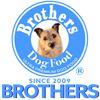Summary:
Thinking about switching your dog’s food? Whether you’re changing brands, adjusting for allergies, or transitioning from puppy to adult food, how you make the change is just as important as what you’re switching to. In this guide, we’ll explain how to change dog food safely, how to avoid digestive issues like diarrhea, and what top veterinary sources recommend. Plus, we’ll break down when to switch from puppy to adult food and what to do if you’ve already switched too quickly.
Why Switching Dog Food the Right Way Matters
You can’t just dump a new kibble into your dog’s bowl and call it a day. Dogs need time to adjust to new ingredients, protein sources, and nutrient balances. Switching dog food too fast can lead to:
- Diarrhea
- Vomiting
- Gas
- Loss of appetite
- Stress or behavioral changes
Your dog’s digestive system is home to billions of bacteria — and even high-quality food can cause problems if introduced too quickly.
How to Change Dog Food the Right Way
Step 1: Choose the Right Time
As PetMD notes, don’t switch foods during a stressful time (travel, surgery, boarding, etc.). Choose a calm week when your dog is healthy and you can monitor them closely.
Step 2: Use a 7–10 Day Transition Timeline
According to AKC and most vets, a slow transition over 7 to 10 days is ideal.
Here’s a basic feeding schedule:
|
Day |
Old Food |
New Food |
|
1–2 |
75% |
25% |
|
3–4 |
50% |
50% |
|
5–6 |
25% |
75% |
|
7+ |
0% |
100% |
This gradual shift allows your dog’s gut microbiome to adapt without a shock to the system.
Step 3: Monitor Stool & Behavior
Keep an eye on:
- Stool consistency
- Energy levels
- Appetite
- Itching or scratching (could indicate a sensitivity)
If you notice diarrhea or vomiting, slow down the transition — or pause and consult your vet.
Can You Switch Dog Food Without Mixing?
Searches like "switching dog food without mixing" are common — especially from pet parents dealing with picky eaters or urgent dietary changes.
Don’t do it unless necessary.
As Magley Clemson Animal Hospital emphasizes, skipping the gradual mix can overwhelm your dog’s digestive system — especially with richer or more nutrient-dense food. This often leads to:
- Runny stools
- Gas
- Food refusal
Only skip the transition period if your vet recommends it (e.g. medical emergency, allergy testing, etc.).
How to Switch Dog Food Without Diarrhea
To avoid tummy trouble:
- Stick to the gradual transition timeline
- Use a gut-health-supportive recipe (like Brothers, which includes enzymes and probiotics)
- Avoid multiple changes at once — don’t change food, treats, and supplements simultaneously
- Add a plain probiotic or canned pumpkin (not pie filling) to help firm up stools
Brothers Dog Food was designed to reduce digestive issues during transitions. Our gut-health-first formulas include a proprietary blend of enzymes and probiotics that help smooth the switch.
When to Switch From Puppy Food to Adult Food
General Guidelines:
- Small breeds: 9–12 months
- Medium breeds: 12–14 months
- Large breeds: 14–18 months
- Giant breeds: 18–24 months
What matters most is developmental stage, not just age. Puppies should stay on puppy food until they reach about 80–90% of their expected adult weight.
If you're unsure when to switch, ask your vet. Our recipes meet AAFCO standards for all life stages, so they can support puppies, adults, and seniors — with one consistent formula.
Is It Bad to Switch Dog Food?
It’s not bad — it’s necessary! Switching is often a great decision if:
- Your dog has food sensitivities
- You want to improve ingredients or protein quality
- You’re upgrading to gut-health-focused nutrition
That said, frequent switching without a reason can irritate your dog’s digestive system. Dogs thrive on consistency. If you do switch, do it with care.
Signs You Switched Your Dog’s Food Too Fast
If you notice these after a sudden change:
- Loose or watery stool
- Vomiting or gagging
- Gas or bloating
- Food refusal
You may have transitioned too quickly. Pause, go back to the old food for a few days, and restart with a slower blend-in process.
How Brothers Dog Food Makes the Transition Easier
At Brothers, we believe food should support long-term health — and transitions shouldn’t be stressful.
Our recipes are built to help:
- Protect the gut during change
- Improve digestion and nutrient absorption
- Minimize allergy flare-ups
- Reduce loose stools and inflammation
Because we use:
- Over 90% animal-sourced protein
- Low-glycemic carbs
- A proprietary blend of digestive enzymes + probiotics
- Zero corn, wheat, soy, or artificial additives
Final Thoughts: Transition with Purpose, Not Panic
Switching dog food doesn’t have to mean chaos in the kitchen or accidents on the carpet. With the right approach — and the right food — your dog can transition smoothly, safely, and with zero drama.







0 comments